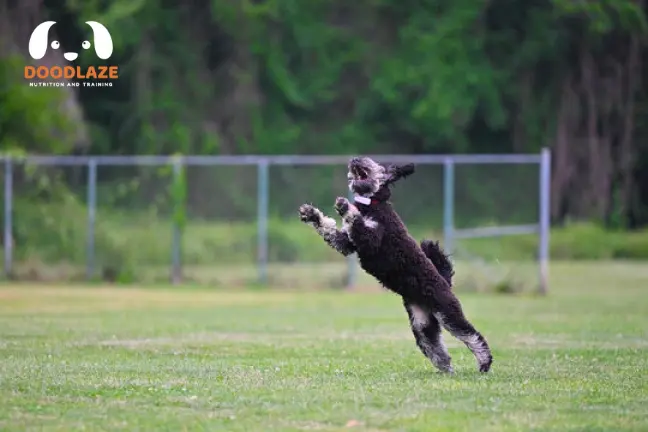Bernedoodle Size Guide 2024: When Do These Dogs Stop Growing?
How do you combine the strength and charm of a Bernese Mountain Dog with the intelligence and hypoallergenic coat of a Poodle? Have you ever wondered what the result would be? The Bernedoodle is a mixed breed that brings together the qualities of the Bernese Mountain Dog and the Poodle.
These dogs are known for their loving and friendly personality, making them great family pets, especially when kids or other animals are around.

Bernedoodles are available in three sizes: Standard, Miniature, and Toy, which depends on the size of the Poodle parent used in breeding. They can have curly, wavy, or straight coats and generally don’t shed much. This makes them a good option for those with allergies, though shedding can vary from one dog to another. Do you know about saint Saint Berdoodle.
Bernedoodle Size Overview
Bernedoodles are available in several sizes: standard, mini, and micro mini. The information below provides a basic idea of what to expect in terms of size, but remember that the actual size of a Bernedoodle can vary depending on its parents.
Bernedoodle Size and Growth Chart
| Bernedoodle Type | Height (inches) | Weight (kg) | Maturity Age |
| Standard | 22 – 29 | 22 – 40 | 2 years |
| Medium | N/A | N/A | 11 – 15 months |
| Mini | 18 – 22 | 11 – 22 | 12 months |
| Micro Mini | Less than 18 | 7 – 13 | 12 months |
The growth of a Bernedoodle, whether Standard, Miniature, or Toy, will vary. When discussing crossbreeds, it’s important to note a few key points about their genetics and growth. First, crossbreeds often grow larger and are generally healthier than either of the parent breeds due to what’s known as hybrid vigor.
Furthermore, the exact makeup of a Bernedoodle can vary. For instance, a dog that is the first generation mix (F1) of a Poodle and a Bernese Mountain Dog will generally share characteristics common to both breeds.
However, if a Bernedoodle is bred (where one parent is already a Bernedoodle), the puppies can inherit traits more similar to either the Poodle or the Bernese Mountain Dog, affecting their size and other attributes.
Standard Bernedoodle Size
Standard Bernedoodles can weigh between 45-115 pounds and stand 23-29 inches tall at the shoulder. This wide size range is primarily due to the significant variation in the size of standard poodles.
While it’s rare, I’ve seen adult standard Bernedoodles as light as 45 pounds. A knowledgeable breeder can usually predict the adult weight of a puppy within a 10-20 pound margin. However, it’s sometimes difficult to be certain.
This is one reason why we wait until puppies are 7 weeks old before letting families choose their new pet.

At this age, we can complete thorough evaluations of each puppy’s temperament. We can also better estimate whether a puppy will be on the larger or smaller end of the spectrum.
We always allow families to pick their own puppy, but we first provide insights into each puppy’s temperament and discuss the best size and coat type for their home.
Mini Bernedoodle Size
Mini Bernedoodles commonly weigh between 18-45 pounds and measure 18-22 inches in height at the shoulder. For those seeking a smaller dog, likely to remain under 50 pounds, a small mini or a tiny/f1b mini Bernedoodle might be the best option.
Micro Mini Bernedoodle
Micro Mini Bernedoodles weigh between 15-30 pounds. If you prefer a dog that remains under 50 pounds as it grows, opting for a small mini or a tiny/f1b mini Bernedoodle could be a suitable choice.
When Does Bernedoodles Fully Grow?
Bernedoodles usually reach their maximum size by the time they are 12 to 18 months old. Some of the smaller ones might nearly reach their full growth before they hit 12 months.
As they get older, their growth pace decreases until it stops. It’s key to note that growth can vary from one Bernedoodle to another, influenced by their genes, diet, and overall health.
Factors That Influence Bernedoodle Size

The size of a Bernedoodle can be influenced by various elements including their genes, what they eat, and how much they exercise. The size of the Poodle parent is particularly important as it largely determines how big the Bernedoodle will get.
Ensuring that your Bernedoodle has a well-rounded diet and gets enough exercise is important for its healthy growth and development.
Suitable Diet for a Healthy Bernedoodle Weight
To keep a Bernedoodle at a healthy weight, they should eat a high-quality diet that matches their size, age, and how active they are. It’s important to stick to the feeding recommendations from your vet or the dog food brand and to check your dog’s weight often.
Regular physical activity is key to ensuring your Bernedoodle stays in shape and avoids health problems linked to being overweight.
How to Measure Your Bernedoodle
To find out how tall your Bernedoodle is, get them to stand on a level surface and make sure their legs are directly under them. Then, with a measuring tape or ruler, measure from the top of their shoulder blades (withers) straight down to the floor.
To check their length, measure from where the tail begins all the way to the tip of their nose using a measuring tape.
Tips for Keeping Track of Your Bernedoodle’s Growth
It’s important to regularly monitor how your Bernedoodle grows to ensure they are healthy and developing well. Paying attention to their size and weight helps spot any health concerns early. Here are a few suggestions on how to effectively track your Bernedoodle’s growth:
- Regularly measure and weigh your Bernedoodle to monitor their development.
- Watch for any sudden changes in size or weight that could indicate health issues.
- Adjust their diet and exercise routines as needed based on their growth and health status.
Regular Veterinary Visits
It’s important to set up consistent vet appointments to keep track of your Bernedoodle’s health and development. Your veterinarian can check on your dog’s growth, spot any potential health concerns, and offer advice on the right diet and exercise for your pet.
It’s advisable to bring your Bernedoodle to the vet at least annually, though puppies might need to go more often to make sure they’re growing properly.

Recording Weight and Size
Maintaining a log of your Bernedoodle’s weight and dimensions is useful for tracking their development. Use a breed-specific growth chart for Standard, Miniature, or Toy sizes as a guide to expected growth milestones.
Consistently measure your dog’s height and length, following the methods previously described, and jot down these figures.
Modifying Diet and Exercise Accordingly
As your Bernedoodle matures, their dietary requirements might shift. It’s necessary to provide a diet that is well-rounded and tailored to their specific needs, considering their age, size, and how active they are. Keep an eye on your dog’s physical condition and talk to your vet about the optimal diet for your Bernedoodle.
Exercise plays a significant role in your Bernedoodle’s health and development. Regular activity not only keeps them at a healthy weight but also builds muscle and enhances overall health.
Pay attention to how much energy your dog has and tweak the type and amount of exercise to fit their specific needs. Avoid exercises that are too intense or could put a strain on their joints, particularly while they are still growing.
FAQs
Final Thoughts
As I have summarized the key aspects of Bernedoodles, it’s clear that understanding their growth, health needs, and characteristics can significantly enhance the care you provide. Whether you opt for a mini, medium, or standard Bernedoodle, each brings its unique set of traits and requirements.
A proper diet, regular vet check-ups, and adequate exercise are imperative to ensure your Bernedoodle thrives. By staying proactive in monitoring their development and adjusting care as needed, you’ll help your Bernedoodle lead a happy, healthy life, making them a lovely addition to your family.


One Comment